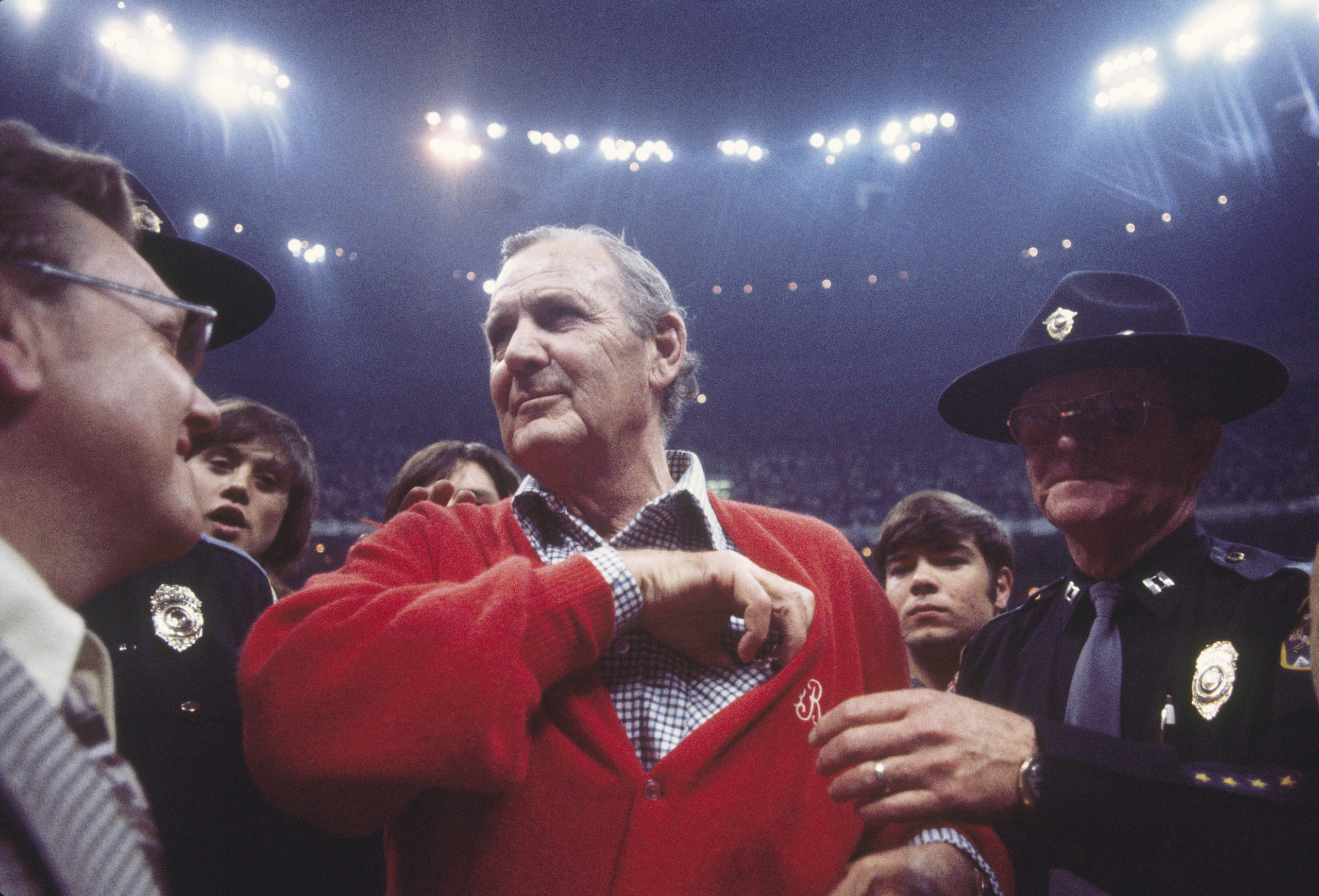Where Football Coaches Walk on Water
“I told everybody you southern boys would fight. Now fight!”

I will never forget walking into my dorm room for the first time at a small, Christian college just outside Raleigh, North Carolina. My roommate, a stout fella from Jasper, Alabama, was unloading his personal effects, trying to give the cramped quarters a homey feel. I watched him dig a George Foreman grill out of a duffle bag and place it on the lavatory. On the tiny flakeboard desk next to his bed, he laid a leather King James Bible as big as an old Sears catalog, held together with at least half a roll of duct tape to keep Deuteronomy from falling out. Beside it stood a picture of “Miss Sandy,” his sweet mother. Her cherubic face served as a totem, reminding him of home, and of the fiery wrath he would incur if he got up to too much foolishness.
On the wall above the desk he hung a large portrait that stopped me in my tracks. It was an enlarged version of an Alabama postcard from 1966 of Paul “Bear” Bryant walking on water.
Comments